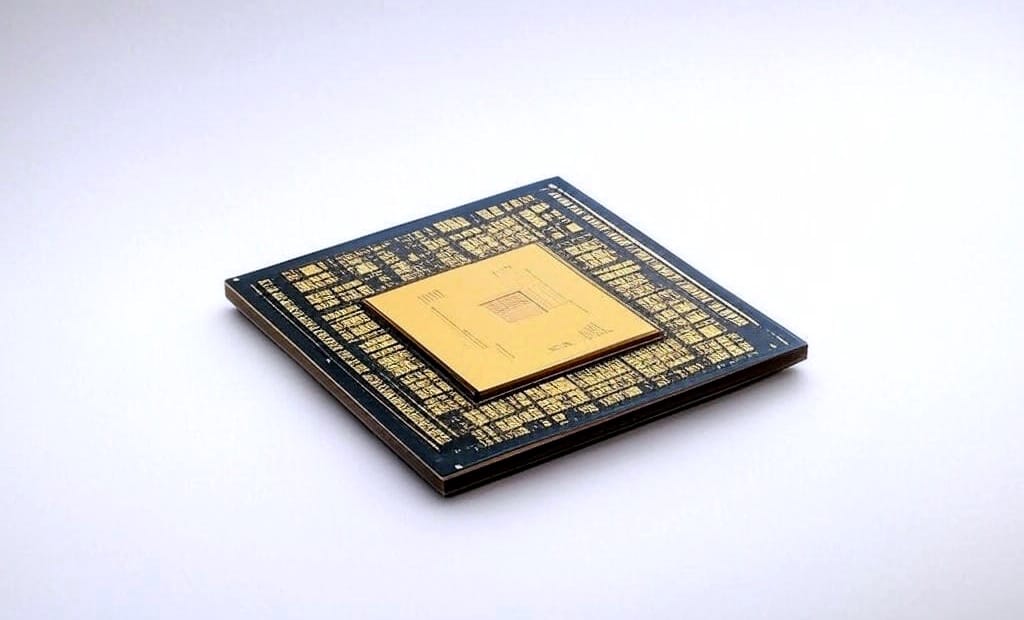Microsoft’s Quantum Chip: Did We Just Peek Into Pandora’s Box?

Last week, I was hunched over my screen, tea going cold, watching Microsoft drop their quantum computing bombshell. I’ve been around tech for more than 25 years—seen the internet crawl out of dial-up purgatory, watched AI turn from sci-fi to my daily assistant—but this? This hit me square in the chest. Their topological qubit chip isn’t just some geeky milestone; it’s the kind of thing that makes you stop, blink, and wonder what the hell we’re getting ourselves into.
I mean, Satya Nadella—Mr. Cool-and-Collected himself—stood there and said, “We are dealing with forces we cannot fully understand.” That’s not a soundbite you shrug off. I’ve heard CEOs hype their shiny toys before, but this was different—raw, almost haunting. After a quarter-century in this game, I don’t spook easy, but that line’s been looping in my head ever since.
What Microsoft’s cooked up with this quantum chip is wild. They’ve used these things called Majorana zero modes—don’t ask me to sketch it, I’d butcher it—and somehow made qubits that don’t fall apart the second you breathe on them. Their demo showed a 10,000x jump in coherence time. That’s not a tweak; that’s a rewrite of the rules. I’ve been keeping an eye on quantum computing for years, half-convinced it’d stay a pipe dream—too fragile, too finicky. But this? This might actually work, and it’s got me buzzing and brooding all at once.
Quantum mechanics isn’t just “advanced tech”—it’s downright eerie. A dear friend of mine put it so perfectly I scribbled it down: “The math’s like poetry, but we’re dancing with something we don’t fully get.” Even the legends—Feynman, with his “nobody understands quantum mechanics” quip—knew it’s a beast that doesn’t play by our rules. Microsoft’s figured out a way to pin it down, wrapping quantum info in these topological shields so it doesn’t vanish like smoke. It’s brilliant, no question. But brilliance doesn’t mean we’ve tamed it.
And then there’s the part that keeps me up at night. If this quantum stuff scales up—and I’m starting to think it might—our whole digital world could crack open. Encryption? Is the stuff keeping my bank account and your Spotify login safe? It could turn to dust under a quantum hammer. Smart folks are working on fixes—that’ll make your stomach drop—but are we fast enough? I’m not holding my breath, and my passwords are already a mess.
It’s not just security, either. Imagine who gets their hands on this first. Microsoft’s talking a big game about opening it up through Azure Quantum, but let’s not kid ourselves—early days, it’ll be the big players—tech giants, governments—calling the shots. That kind of power in so few hands? It’s not just code and circuits; it’s a whole shift in who holds the reins. I’ve seen tech reshape the world before, but this feels bigger and messier.
Don’t get me wrong—the upside’s dazzling. We could be looking at drugs that save lives in ways we can’t yet dream, logistics so slick we cut carbon without blinking, and economy models that give us a fighting chance. I want that—I need that. But Nadella’s words keep nagging at me: “forces we cannot fully understand.” It’s not just humility; it’s a red flag flapping in the wind. I’ve watched tech leap ahead of us too many times—think nuclear bombs, gene editing—leaving us scrambling to catch up. This time, I’d kill for us to pause, breathe, and figure out how to handle it before it handles us.
So yeah, maybe we’re cracking open Pandora’s Box. Microsoft’s quantum chip could be the spark that lights up everything—or burns us if we’re not careful. I’m not saying slam the brakes—god knows we can’t—but can we at least talk about it? Bring in the ethicists, the policy people, not just the lab coats? If you’re as hooked as I am, this guide lays it out without drowning you in jargon—worth a peek.
Me, I’m still wrestling with it—awed, antsy, and hoping we’ve got the guts to steer this right. Because if we don’t, it’s not just a chip we’re talking about—it’s the future, and it’s coming fast.